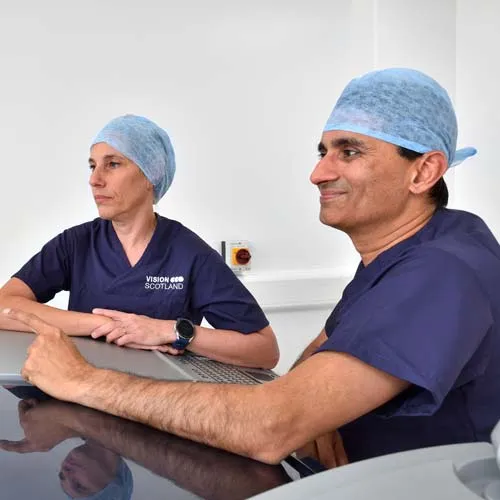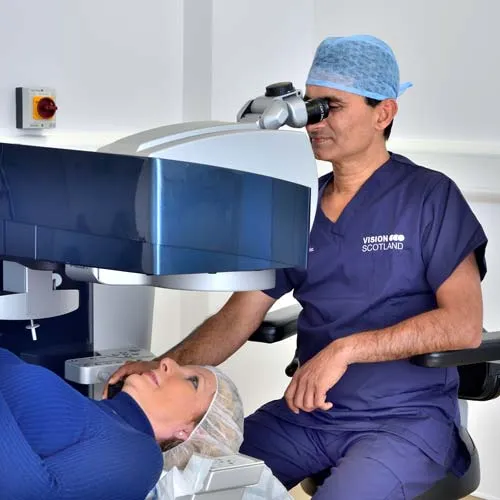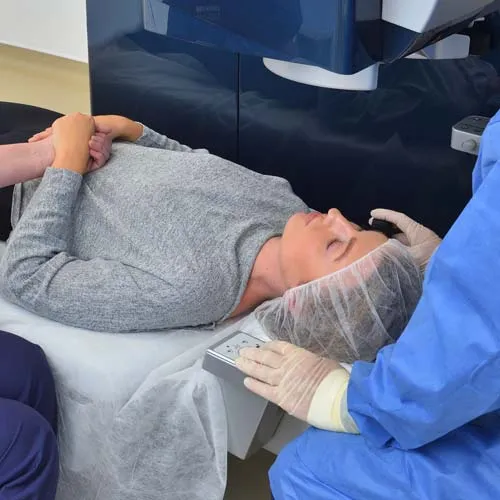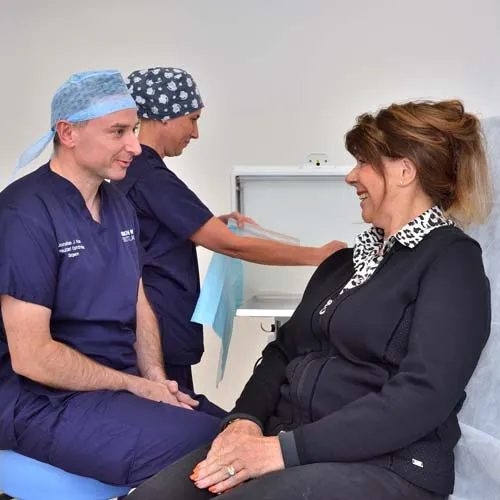- Vitreo retinal
- floaters
Vision Scotland : Everything you need to know
Treating floaters
Transform your vision with fast, precise
and painless laser eye surgery treatment.
Transform your vision with fast, precise
and painless laser eye surgery treatment.

In a very small number of cases, Vitrectomy Surgery is recommended in the treatment of “floaters” in the eye. Since floaters are largely harmless surgery is not generally advocated. However, for some patients the floaters may cause significant visual symptoms that affect the quality of vision and their ability to work. In such cases the vitreous gel maybe removed through an operation called vitrectomy.
Some eye specialists may offer YAG laser treatment for floaters. We do not recommend or offer this type of treatment.
Patients often describe floaters as moving or floating opacities in their vision that may look like cobwebs, dots or lines. Floaters tend to be more frequent in short-sighted people or are typically seen as we get older.
Floaters typically form as the vitreous gel in the back of the begins to break down. The vitreous is a jelly like substance found in the back of the eye. It helps in providing structural supports for the eye as it develops in the womb. At birth, the vitreous gel is a clear and is firmly attached to the retina, the light sensitive film at the back of our eyes. However, as we age the vitreous begins to breakdown into small debris that floats around the back of the eye. The breakdown of the vitreous is associated with a separation of gel from the retina. This is called a posterior vitreous detachment, abbreviated to PVD.
Floaters are generally harmless and represent a normal and natural ageing changes in the vitreous. However, for a minority of patients, floaters may be extremely debilitating.






The surgery is considered low risk and low impact, but your eye will feel uncomfortable, gritty, and itchy for a week or two. It may also look red or bruised. Regular pain relief is usually enough to treat the discomfort.
You will receive eye drops to reduce inflammation and prevent infection. Your eye will heal over the next 6 to 8 weeks but your vision might continue to improve for several months following the surgery. If a retinal tear develops during surgery your surgeon may put a bubble of gas inside your eye to stop the retina from detaching. In this case you may have to posture with your head in a certain position, and your vision will be blurry until the gas disappears.
You must not fly until the gas has disappeared as the bubble will expand and damage your eye. You must also not have nitrous oxide anaesthetic for the same reason. It is normal to have some discomfort after any operation, but you should contact Vision Scotland should you have any concerns.
All surgery is carried out by the same surgeon you see in consultation.
Our surgeons are all highly experienced with more than 10+ years’ experience in refractive surgery.
Experienced, caring nursing and optometrist team.
HIS approved purpose-built facilities.
State-of-the-art diagnostic and surgical equipment.
Robust, extended aftercare plans as part of package.